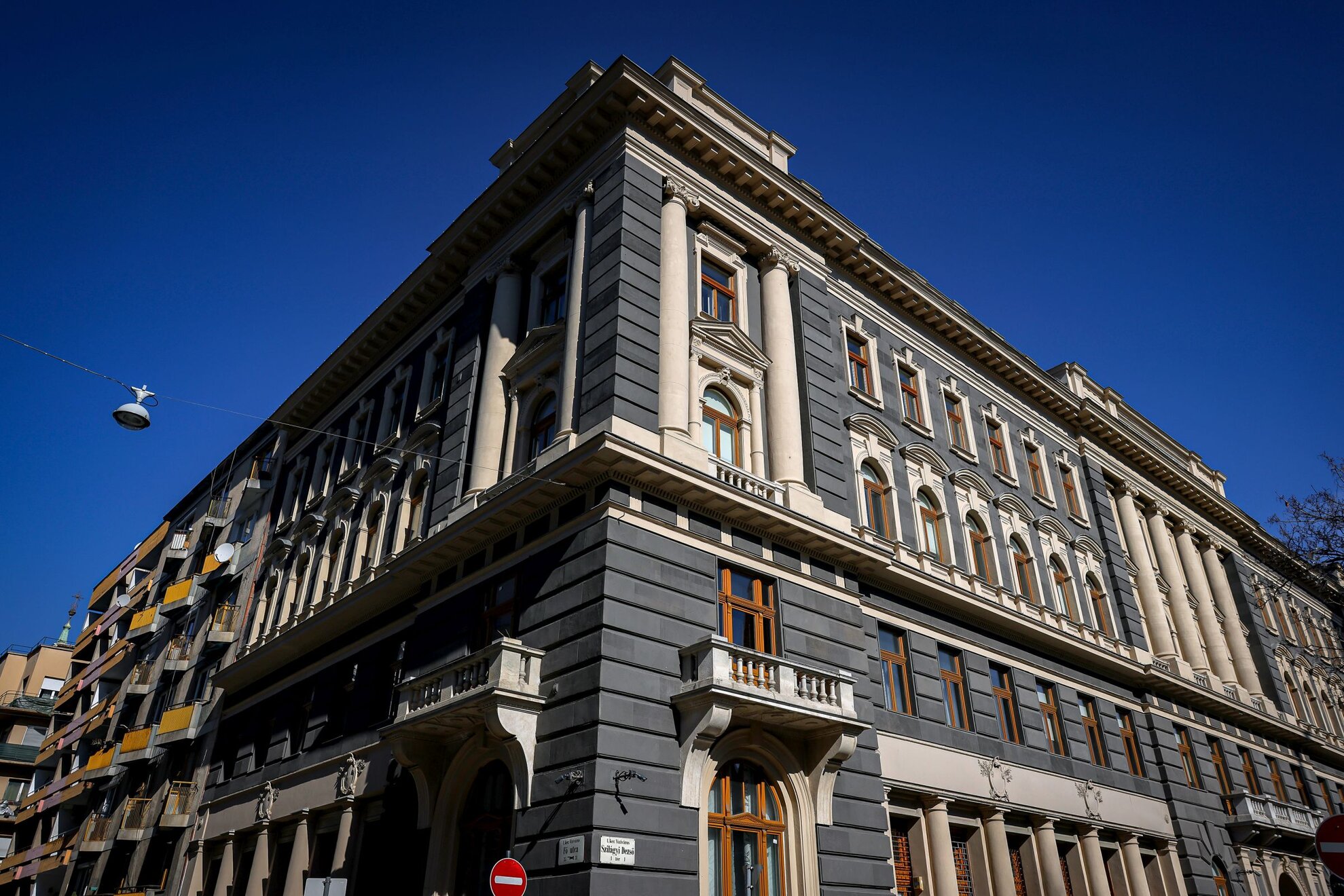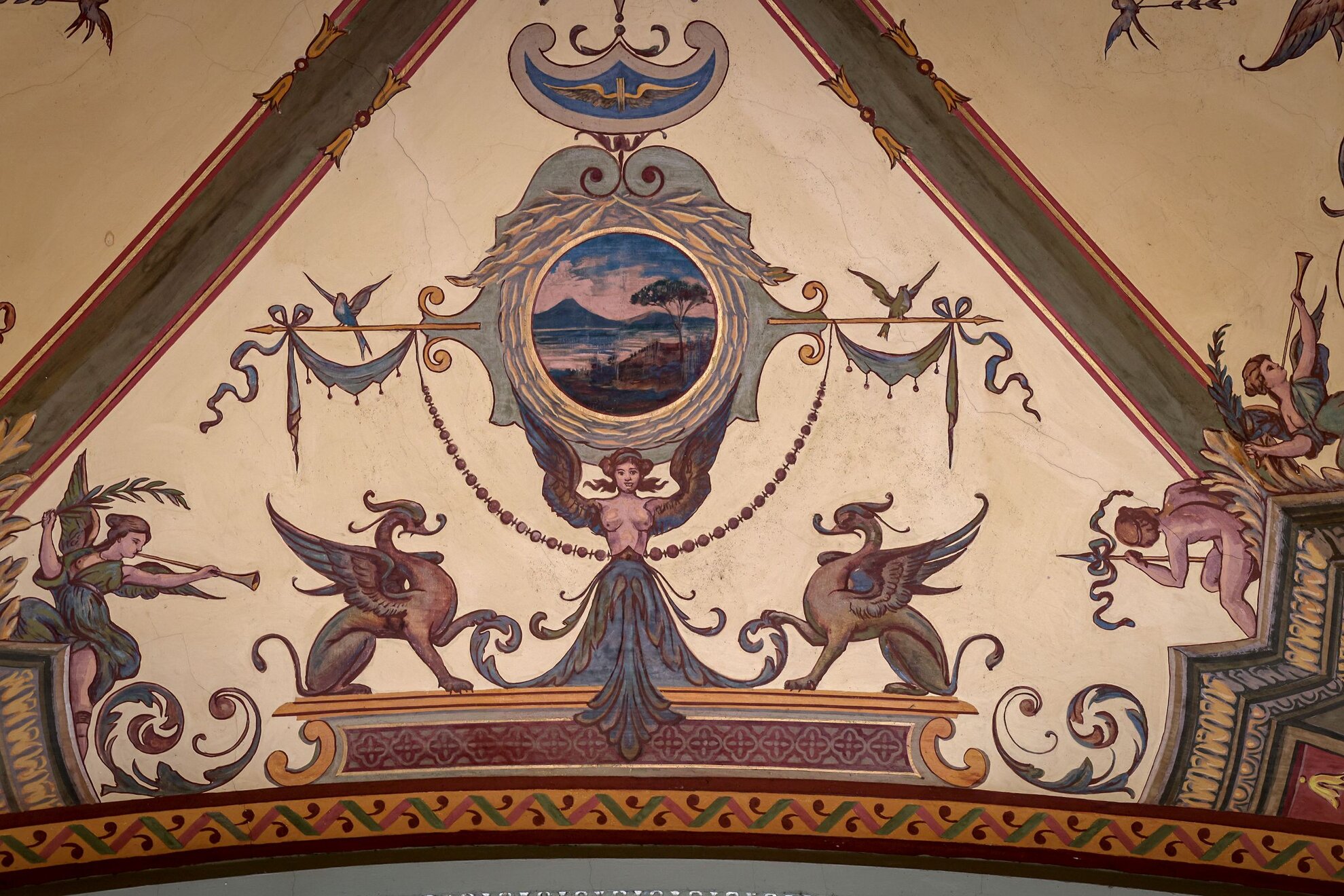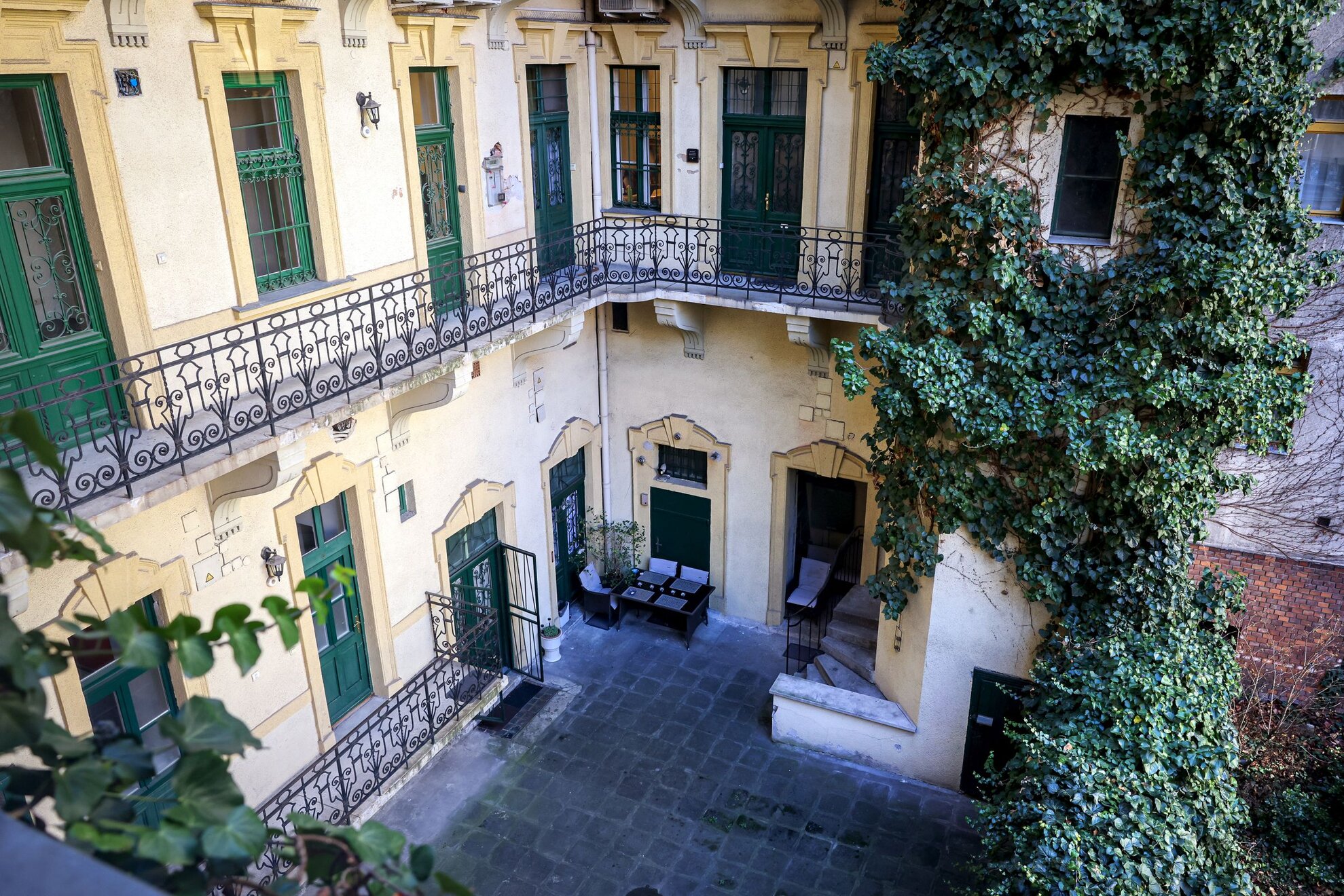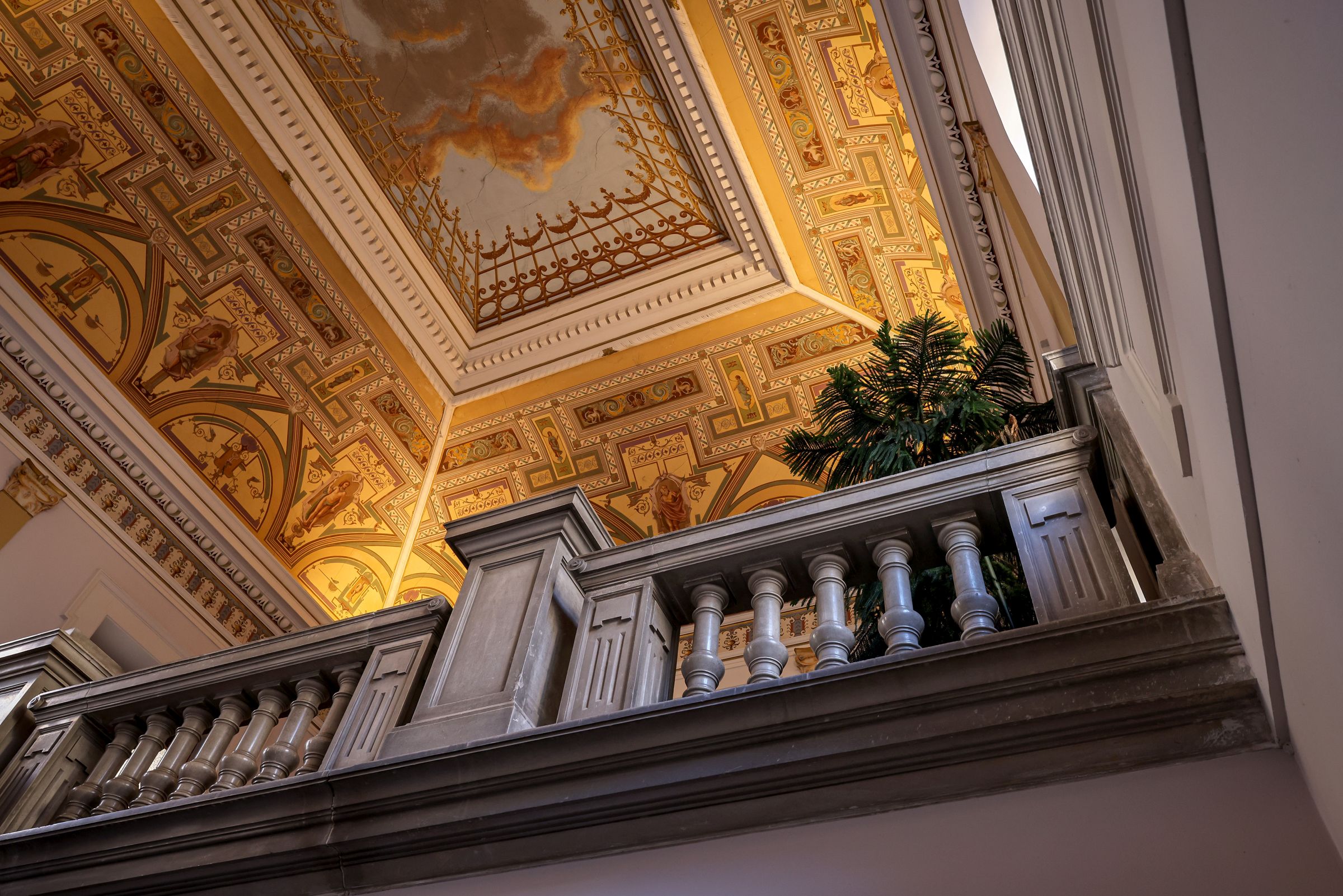Whether you stand on riverside Bem rakpart or busy
Fő utca, the clinker-brick, the neo-Gothic Reformed Church and the monumental,
monochrome neo-Renaissance Neuschloss Palace provide an interesting montage on
Szilágyi Dezső tér.

On the Fő utca side, there was originally a Copf-style house, whose site is now occupied by this four-storey, grey-faced apartment house, full of cornices and avant-corps, first built for investment purposes. Offices and flats were opened here as early as 1899, the year it was unveiled, and the palace still functions as an office building.
The house was built for Miksa Neuschloss and his wife, and since their family was skilled in construction, architecture and real estate, it is not surprising that it was designed by Miksa’s brother, Kornél.
Kornél Neuschloss worked not only as an architect but also as an art historian and archaeologist, studying in Switzerland, France and Italy, where his tutors were followers of Historicism. It is therefore no coincidence that he initially designed his buildings in this style.

Later, in the early 1900s, he was attracted by the Art Nouveau movement in Hungary, as seen in his most famous creations, the Elephant House and main gate at Budapest Zoo, and the National Meteorological Institute.
As you walk up the stairs of the Neuschloss Palace
and cling to the grey marble railings, you are greeted by amazing frescos as
you look up. You would have spotted some on you way in, of course, to the right
and left in the doorway.
Depictions of Dutch windmills, a small seaside town and Vesuvius are no coincidence, as in 1913 Neuschloss sold the building to Hungarian
State Railway MÁV, who set up the offices for the 27 railway lines they operated.

Climbing the stairs needn’t stop at the top floor, as you can go out onto the roof and admire the view from the patio terrace. Walking on old wooden boards around the attic, you reach a ladder to climb out of the roof, with the towers of the church opposite in plain view.
In recent years, the building has been renovated, resulting in the monochrome colour scheme, which is an arbitrary decision but follows the original colour pattern from 1899, before a red façade replaced it.




